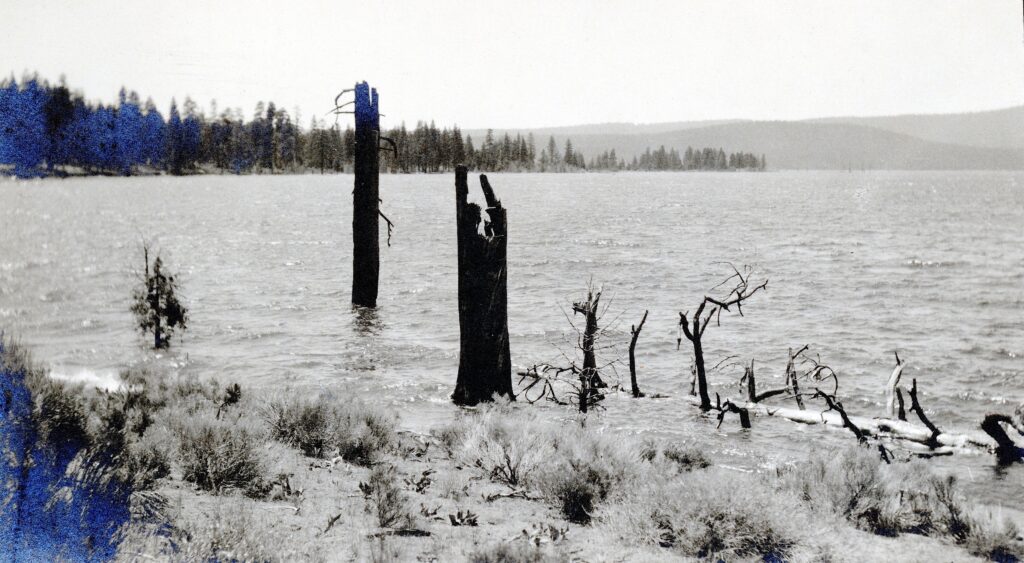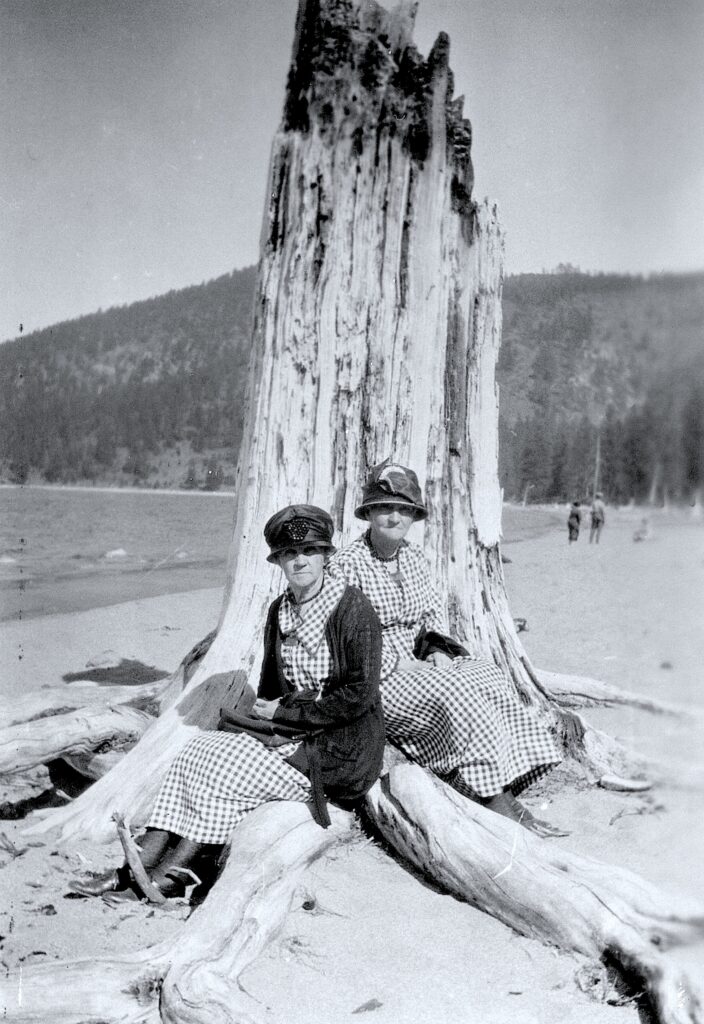
The first recording of Eagle Lake’s lake level elevation occurred in 1875, done by the United States Government Land Office. The surveyor’s benchmark was placed at the lake at an elevation of 5,109 feet above sea level. Their documentation has been cited continuously as a guidepost for monitoring the lake’s fluctuation. At the moment the lake level stands at 5092 feet.
Eagle Lake began rising after the 1875 survey. In the early 1880s, the lake had encroached on developed ranch land on the north shore and the pine trees on the south shore were being inundated. Thus, at the south shore began creation of what was called the “stub forest.”
In 1915, Professor S.T. Harding began studies of the water variations at Eagle Lake. Harding, as well other scientist, were intrigued with the rising low that lake levels. After all, the lake has no outlet, but further the main water source was the spring run off. When Harding arrived on the scene the lake level had increased 13 feet since 1875. Harding focused on the stub forest to obtain data on the lake’s elevation. He studied the tree rings and the exact elevation of a number of trees. By taking the lowest submerged trees (the oldest one was found to be a 245-year old stump at the elevation of 5,116, that was submerged in 1895), he determined the lake level had to be at 5,115 feet or less from 1650 until the time it was submerged. Another stump examined placed its initial growth between 1420 and 1520, and during that time period the lake had to be at an elevation below 5,099 continuously from 1420 to 1520. In addition, Harding also examined trees at the 5,126 foot elevation that were found to be over 400 years old.

By the early 1920s, the stub forest literally lived it to its name. In 1918, the lake began to recede, which it should be noted prior to the Bly tunnel. The inundated trees of the south shores reduced to dead snag trees, and the tops would break leaving tree stumps. It should be noted that a few stumps still existed at the south shore in the 1960s.
Support by subscribing.